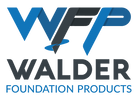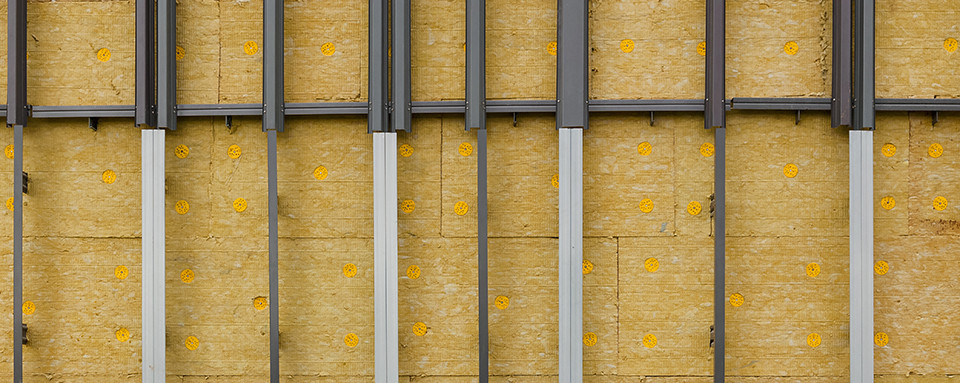How Braces Halt Basement Wall Movement: Effective Basement Wall Bracing Methods for Foundation Stability
Basement wall bracing refers to engineered systems that counteract lateral soil and water forces pushing inward on foundation walls, and it does so by creating a controlled reaction that prevents further movement and restores structural alignment. This article explains why walls bow or bulge, the primary types of bracing systems used to stop movement, the engineering mechanisms by which braces redirect and resist loads, and how cost and repair choices affect outcomes. Homeowners and contractors need practical signs to diagnose severity, clear comparisons to choose a system, and actionable installation and maintenance guidance to ensure long-term performance. The following sections cover causes and early indicators of movement, a side-by-side overview of major brace types, a technical explanation of how braces stabilize walls, and concise cost guidance with decision criteria. Throughout, the focus is on preventing basement wall movement with braces, highlighting steel I-beam basement support and carbon fiber straps foundation repair as common engineered solutions and explaining when one approach outperforms another. Read on to learn which structural support systems suit moderate vs. severe bowing, what to look for during assessment, and how to weigh DIY limits against professional installation.
What Causes Basement Wall Movement and Why Is Bracing Needed?
Basement wall movement occurs when lateral loads from soil and water exceed the wall's capacity, and bracing is needed to create an equal and opposite reaction that stabilizes the wall and halts progressive deformation. Primary drivers include hydrostatic pressure, expansive clay soils that swell with moisture, frost heave that exerts seasonal uplift and lateral shifts, and poor surface/subsurface drainage that increases pore pressure behind foundations. Understanding these causes clarifies why bracing is selected over or alongside waterproofing and underpinning: braces directly resist lateral force, while waterproofing reduces water load and underpinning addresses settlement. The next subsection explains how hydrostatic pressure and soil expansion produce actionable forces that push walls inward.
How Do Hydrostatic Pressure and Soil Expansion Affect Basement Walls?
Hydrostatic pressure is the force of groundwater that acts perpendicular to the wall surface, and when soils become saturated this pressure increases rapidly and applies continuous lateral load. Expansive clay soil swells as moisture content rises, generating additional lateral displacement that can be cyclical with seasons and rainfall; this translates to alternating push and release on the wall and accelerates fatigue. In practical terms, hydrostatic pressure plus soil expansion commonly lead to horizontal cracks, water seepage through mortar joints, and progressive bulging; these symptoms indicate rising lateral loads that bracing must overcome. Recognizing moisture and soil behavior early helps prioritize drainage improvement in tandem with bracing.
What Are the Common Signs of Bowing Basement Walls?
- Horizontal cracks typically run parallel to the floor and denote bending stress in the wall.
- Inward bulging or leaning of the wall surface shows active displacement and loss of alignment.
- Doors or windows that stick, gaps at the top of walls, and stair-step cracks in masonry reveal differential movement.
A quick diagnostic check is to mark a reference line and measure outwardly: more than 1.5–2 inches of inward movement over a span suggests structural bracing is warranted. Early recognition of these signs leads to less invasive repairs and better long-term outcomes.
What Are the Main Types of Basement Wall Bracing Systems?
Basement wall bracing systems are engineered to resist lateral loads using either compression, tension, or a combination, and the main categories include steel I-beams, carbon fiber reinforcement straps, wall anchors/tiebacks, helical tiebacks, and adjustable internal braces. Each type operates on a defined mechanical principle: some transfer loads to floors/ceiling, others anchor into stable soil, and some bond to the wall surface to restore tensile capacity.
Different bracing approaches suit different severity levels and budgets:
How Do Steel I-Beams Provide Basement Wall Support?
Steel I-beams act as vertical compression struts placed against the interior face of a bowed wall, transferring lateral load through floor or ceiling joists to structural elements and resisting inward movement by bearing against those stable anchors. Installation typically involves a base plate at the floor and a top bracket that secures into ceiling joists or a reinforced beam; tightening the adjustable jack applies a controlled outward reaction to reduce bulge. Advantages include immediate load-bearing capacity and the ability to correct moderate movement; disadvantages include a visible interior element and potential need for minor finish repairs. Proper connection to joists and measured incremental adjustment are essential to avoid over-stressing connected members and to maintain load path integrity.
What Are the Benefits of Carbon Fiber Foundation Repair Straps?
Carbon fiber straps are high-tensile composite strips epoxy-bonded to the wall surface and function in tension to resist further inward deformation by increasing the wall’s flexural capacity. They are ideal for moderate bowing where the wall remains essentially stable and the goal is to arrest movement with minimal disruption; carbon fiber straps are low-profile, preserve interior finishes, and have high long-term tensile strength. Limitations include reduced effectiveness on severely buckled walls and reliance on proper surface preparation and bonding quality. When chosen appropriately, carbon fiber reinforcement provides a durable, low-impact stabilization option with minimal maintenance requirements.
How Do Braces Halt Basement Wall Movement and Stabilize Foundations?
Braces halt movement by creating a reaction force equal to and opposite the lateral soil pressure, thereby re-establishing force equilibrium and stopping progressive deformation; this principle applies whether the brace works in compression, tension, or through deep anchoring. Different brace types achieve the required reaction through distinct load paths: steel I-beams redirect load into structural members in compression, anchors and tiebacks place elements in tension into stable soils, and carbon fiber straps increase tensile capacity of the wall itself. Effective stabilization depends on correct sizing, accurate placement, and engineered attachment points; misapplied braces can shift load paths or create new stress concentrations.
What Is the Mechanism Behind Bracing Systems Counteracting Wall Movement?
At its core, a brace creates a reaction force that opposes lateral soil pressure; the soil exerts a lateral force vector and the brace provides an opposing vector that neutralizes net moment and shear on the wall. Compression solutions (I-beams) develop reaction through compressive bearing against floors/ceilings, while tension solutions (anchors, straps) rely on anchors or bonded fibers to carry tensile load back to stable elements or soil. A balanced design accounts for force magnitudes, lever arms, and attachment stiffness to prevent localized failure and to distribute load into robust structural paths. Understanding these force paths helps select whether a compression, tension, or hybrid approach is most appropriate for the specific failure mode.
How Does the Installation Process Ensure Effective Wall Stabilization?
Effective installation begins with a measured assessment: quantify the extent of movement, map crack patterns, and evaluate soil and drainage conditions; this informs brace type, spacing, and sizing. Preparation includes wall cleaning or excavation for anchors, precise placement of brackets and plates, and staged adjustment or tensioning while monitoring movement; adherence to engineer-stamped plans preserves intended load paths. Post-installation checks—load test, alignment measurement, and scheduled inspections—confirm stabilization and allow controlled adjustments if settlement or rebound occurs. When work involves complex soil conditions or severe buckling, engaging a structural engineer ensures the system design matches expected loads.
How Much Does Basement Wall Bracing Cost and What Are Your Repair Options?
Typical market cost ranges vary by system and severity: carbon fiber straps or epoxy reinforcement commonly fall at the lower end of the repair spectrum, steel I-beam installations sit in a moderate price band, and wall anchors or helical tiebacks command higher costs due to excavation and anchoring complexity. As a rough guideline, expect per-linear-foot ranges that reflect system type, access difficulty, and soil conditions—entry-level strap repairs are comparatively economical while deep tiebacks are the most expensive. Exact pricing requires site assessment and quotes.
What Factors Influence the Cost of Bowing Basement Wall Repair?
Several variables shape total cost: the length of wall affected and the magnitude of inward movement, the chosen system (compression beam vs. tensile anchor vs. bonded reinforcement), site access and required excavation, and any necessary engineering, permits, or additional drainage work. For example, a short run with shallow, moderate bowing suited to carbon fiber straps will cost significantly less than continuous long-run anchoring that requires exterior excavation and soil anchors. Labor and materials, along with any necessary restoration of interior finishes after visible braces, also contribute to final estimates. Evaluating these factors early helps homeowners select the most cost-effective, durable option for their situation.
Should You Choose DIY or Professional Basement Wall Repair?
Minor cosmetic cracks or small, non-structural wall hairline issues may be appropriate for DIY sealing or localized patching, but structural bowing generally requires engineered solutions and professional installation to ensure safety and longevity. Choose a professional when movement exceeds visible thresholds, when anchors or structural attachments are required, or when warranty and engineer-stamped work are priorities; professionals can perform load verification and integrate drainage or underpinning as needed. DIY limits include lack of access to torque-test equipment, inability to perform deep anchoring, and potential to void warranties or create unsafe load paths. When in doubt, a short professional assessment prevents costly mistakes and aligns repair selection with long-term foundation stability.

